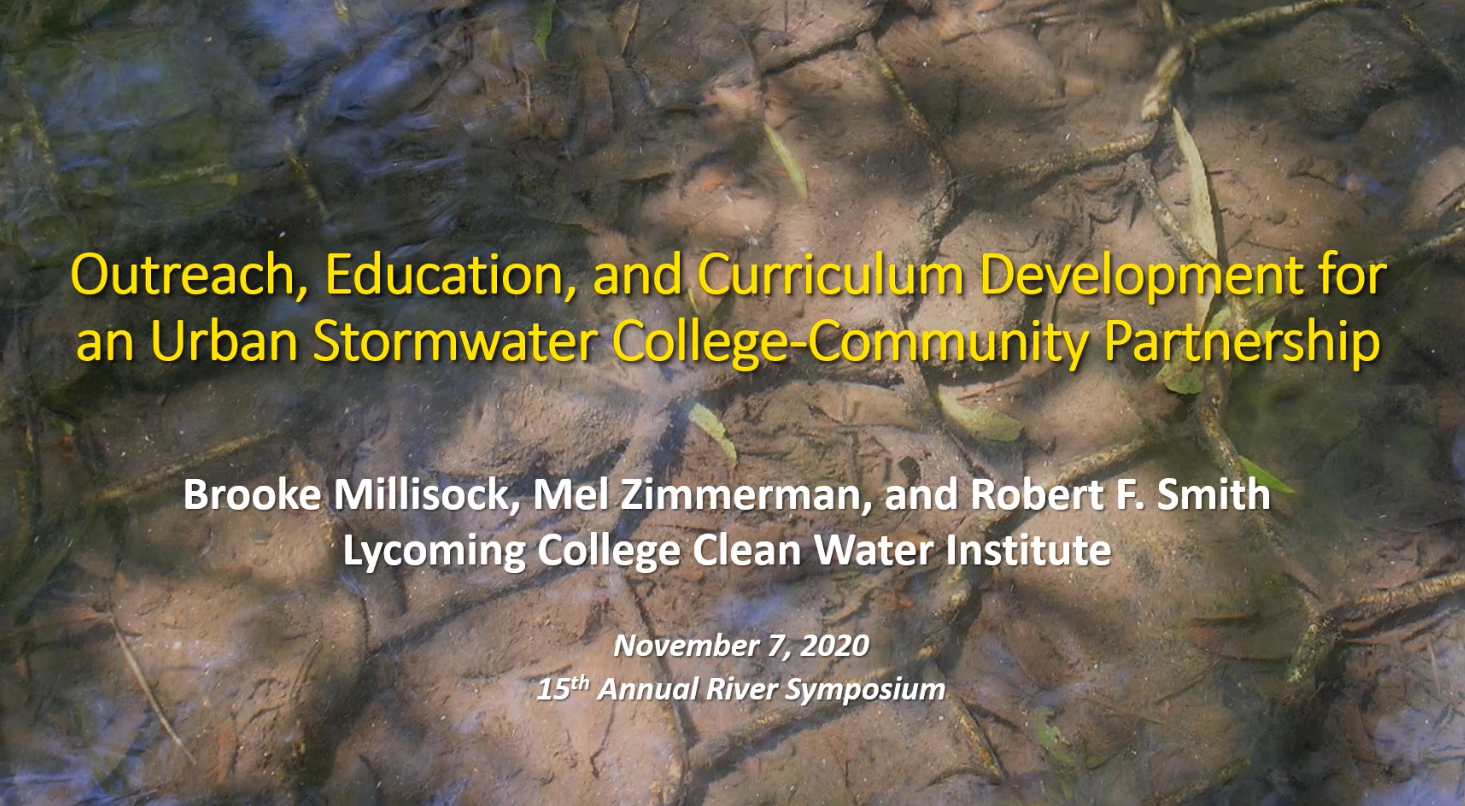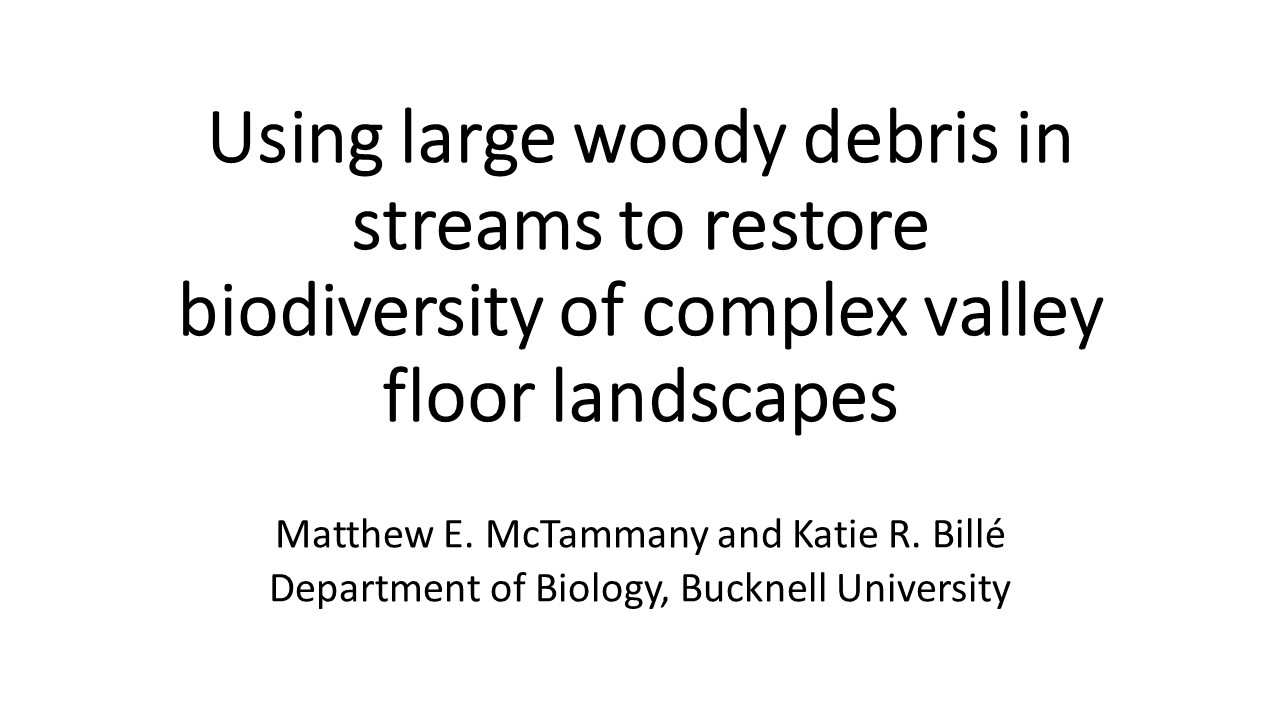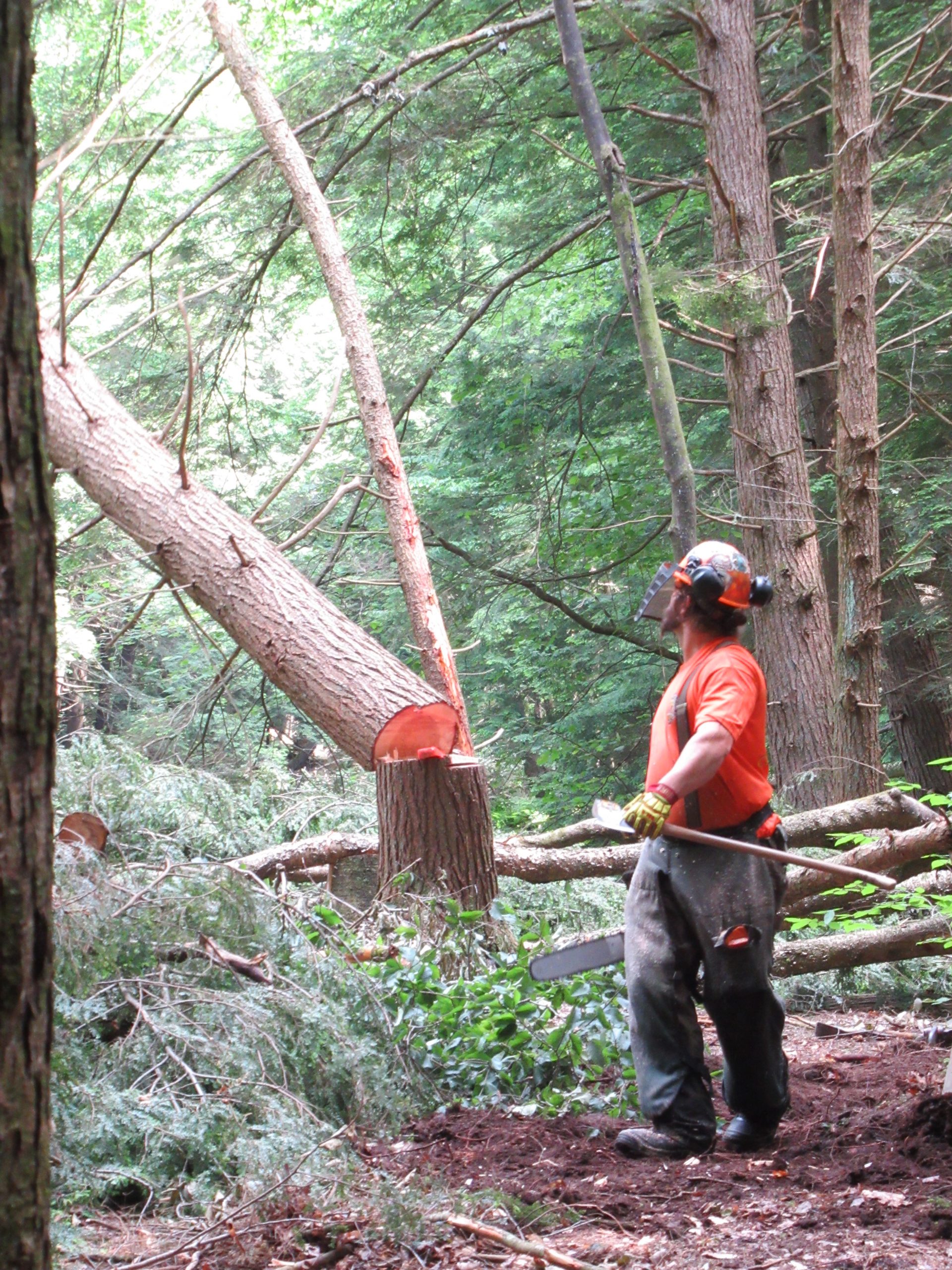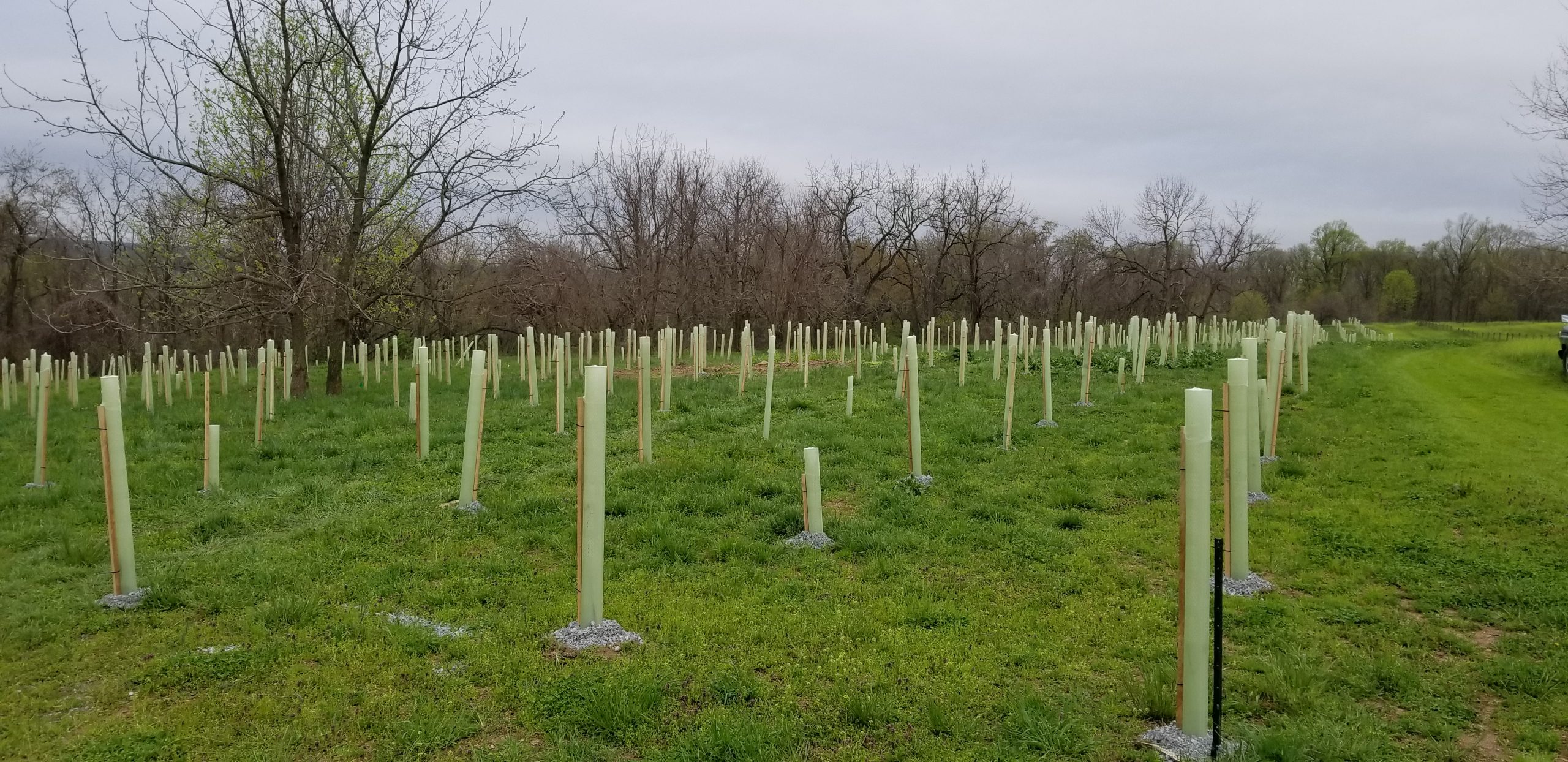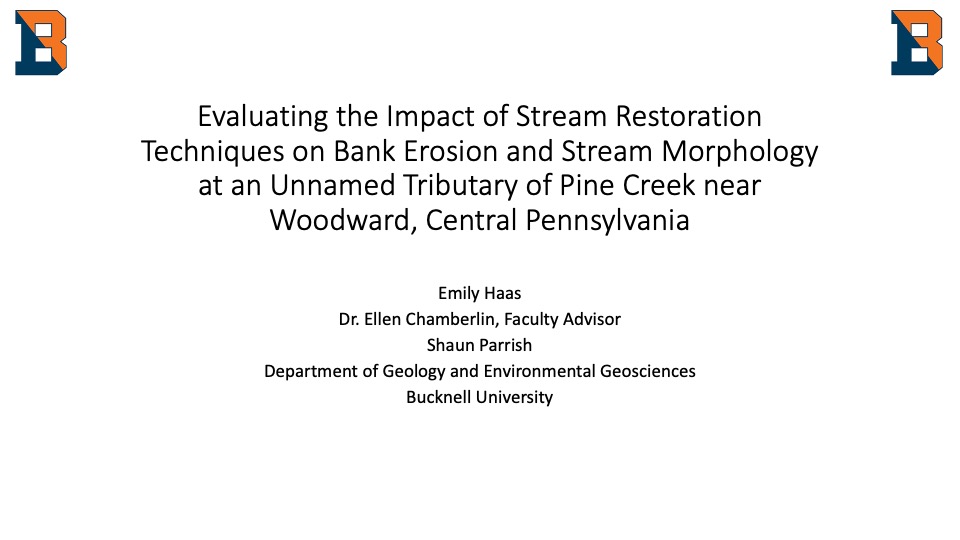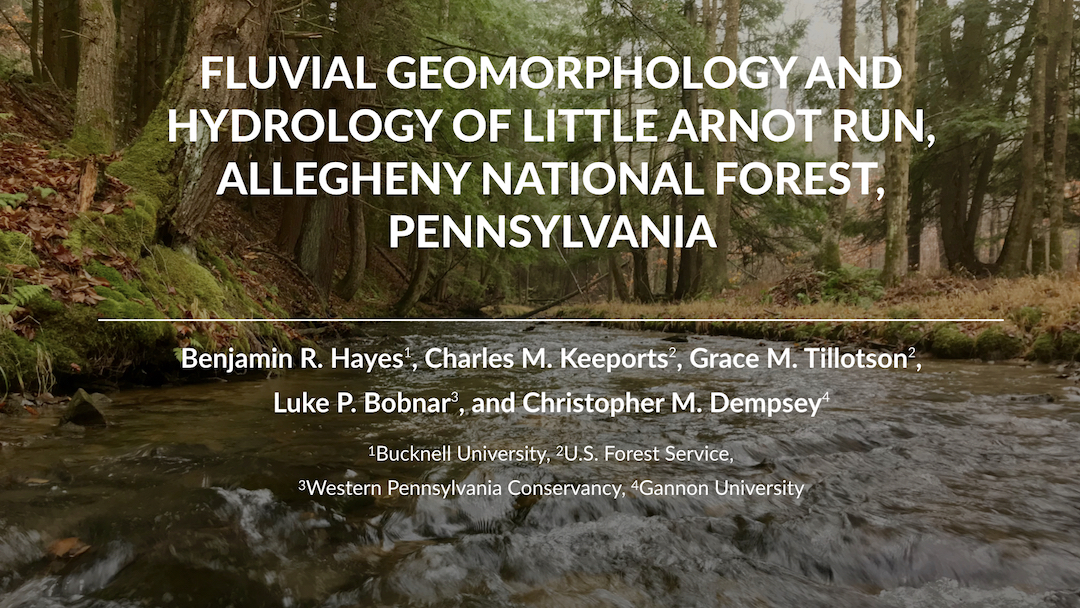To help direct stream restoration activities scheduled to begin in 2021 in the Little Arnot Run (LAR) watershed of the Allegheny National Forest (ANF), we have been characterizing the factors controlling geomorphic processes operating with the watershed. Baseline hydroclimatic data are recorded every 15 minutes using a network of instruments, including a weather station, piezometers, stream gages, water quality sonde, and temperature sensors placed on the bed of the stream. A survey of stream and floodplain features along a 6.8 km length of the lower and middle reaches of the valley was conducted to characterize the stream at the reach- and channel-unit scale. The survey included inventory of large woody debris (LWD), the dimensions of bedforms and channel features such as pool/riffle/run/glide/cascades, width/depth measurements, pebble counts, and observations of channel bed and bank material, root strength, bank height and cohesiveness, evidence of historic alteration, etc. Synoptic measures of flow velocity, shear stress, and discharge are also being collected at selected locations in the channel.
At the reach scale, anthropogenic factors are the dominant influence on the channel morphology, which remains in a protracted phase of adjustment to alterations done during the 19th and 20th century. Relic logging berms, steam railroad grades, and oil infrastructure can be found throughout its lower and middle reaches. In many places the stream was dredged, straightened, and converted to a single-thread channel that is narrow and deep and remains disconnected from side channels up on the floodplain. Relic oil pipes and exploration pits are scattered throughout the floodplain, with broken pipes spanning the channel in several places; at least 12 oil well pads with J-pumps are active today. All these factors are under consideration as part of the restoration strategy.
At the channel unit scale, hydrologic factors are the dominant influence on channel morphology and hyporheic exchange, including bank cohesiveness (% silt and clay), root strength, channel slope, abundance of large woody material, and water and sediment discharge. Average fast water depths ranged from 0.5 to 1.2 m; pool depths ranged from 0.6 to 1.7 m; average wetted widths ranged 4.2m in upper reaches to 5.1 in lower reaches. Average woody material in size class/150m was 2.3 in steep upper reaches and increased to 6.5 in lower reaches, with distinctly less woody material (<1.6) in the proposed restoration reach. Channel slopes varied from 0.09 to 0.18 and averaged 0.014, hydraulic radius 1.4 and roughness coefficients on the order of 0.042. Bed sediment size decreased in a downstream direction, with pools consisting predominantly of well-sorted sand and fine gravel (D50 = 20 to 80mm) and riffles consisting of cobble-boulder in riffles (D50 = 20 to 80mm). Bankfull velocities are estimated to range from 1 to 2.1 ft s-1, with most bed material and large woody debris mobile.
Most of the stream is shaded completely by mature forests, with little to no direct solar radiation. Diurnally, water temperatures vary between 2 and 4°C, showing the greatest variability during the low-flow periods in late summer and winter, when air temperatures vary considerably and buffering from groundwater inputs are low. Seasonal 2019 stream temperatures varying cyclically, with average temps of 1.1°C during the winter (Dec.-Feb.), 6.4°C during the spring (Mar.-May), 16.1°C during summer (Jun.-Aug.) and 7.8°C during the fall (Sep.-Nov.). During the summer months, temperatures increased 1.2°C/km in a downstream direction, largely the result of long-wave atmospheric radiation during the day.
No overbank floods occurred since monitoring began in Dec. 2018. Flows in the stream are relatively short lived in response to rainfall-runoff and snowmelt events, with a time of concentration of less than 6 hours and long recession curve, depending on the amount and duration of precipitation or snowmelt. Elevations of the stream and groundwater surface are recorded every 15 minutes in a network of piezometers and gage stations installed in the channel and adjacent valley alluvium. Following rainfall-runoff events, as stream levels rise, the groundwater table slopes away from the channel and down-valley, resulting in hydrostatic-driven exchange. This hyporheic exchange is driven by static hydraulic gradients which are determined by changes in water surface elevation in the channel, spatial heterogeneity in saturated hydraulic conductivity of the bed and bank material, and changes in the saturated cross-sectional area of floodplain alluvium through which hyporheic flow occurs. Falling-head tests conducted in three piezometers screened in the valley fill deposits indicate that the hydraulic conductivity (K) of the valley alluvium ranges from 4 x 10-3 m s-4 to 8 x 10-2 m s-1, suggesting hyporheic exchange rates could be very high. Limited exposures in well borings and stream banks suggest the valley fill material is laterally heterogeneous and longitudinally anisotropic, with highly permeable gravel/cobble layers likely controlling patterns of interfacial flux and flow paths. Additional work is underway to determine the rates and directions of hyporheic exchange, which greatly influences stream ecosystem processes and bio-geochemical cycles in Little Arnot Run and will be an important component of the restoration and management plan of this watershed and others throughout the Allegheny National Forest.
